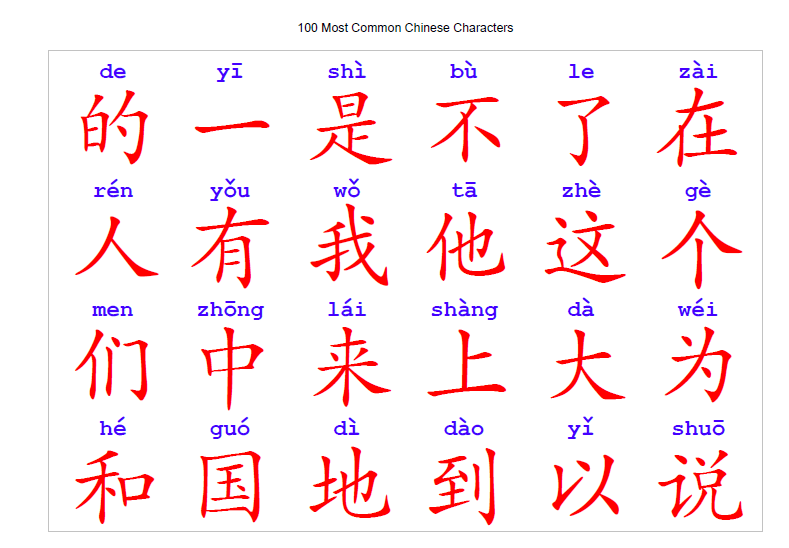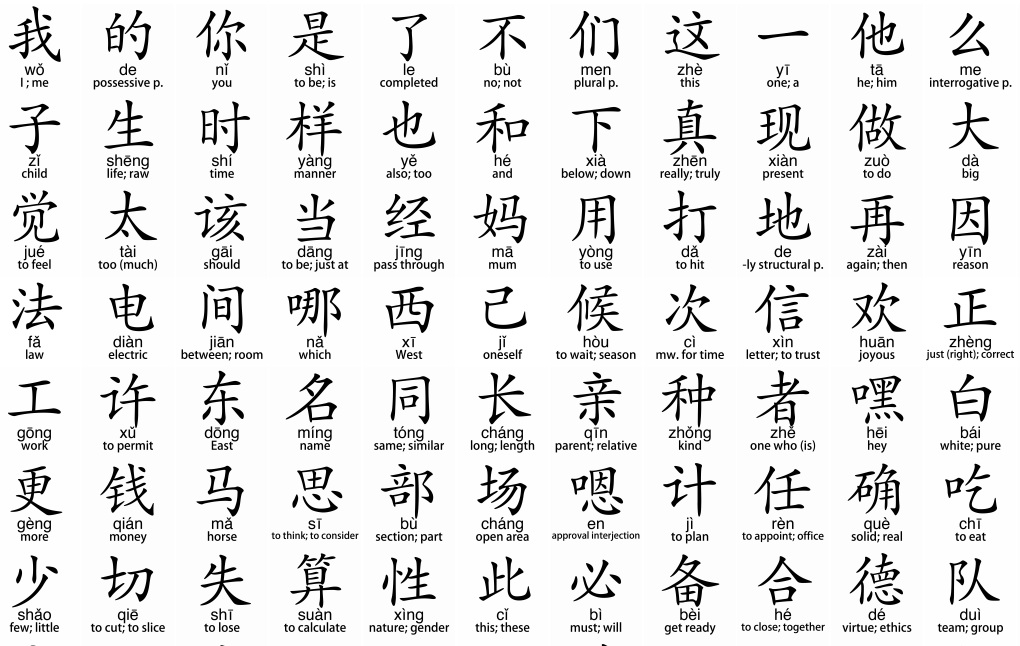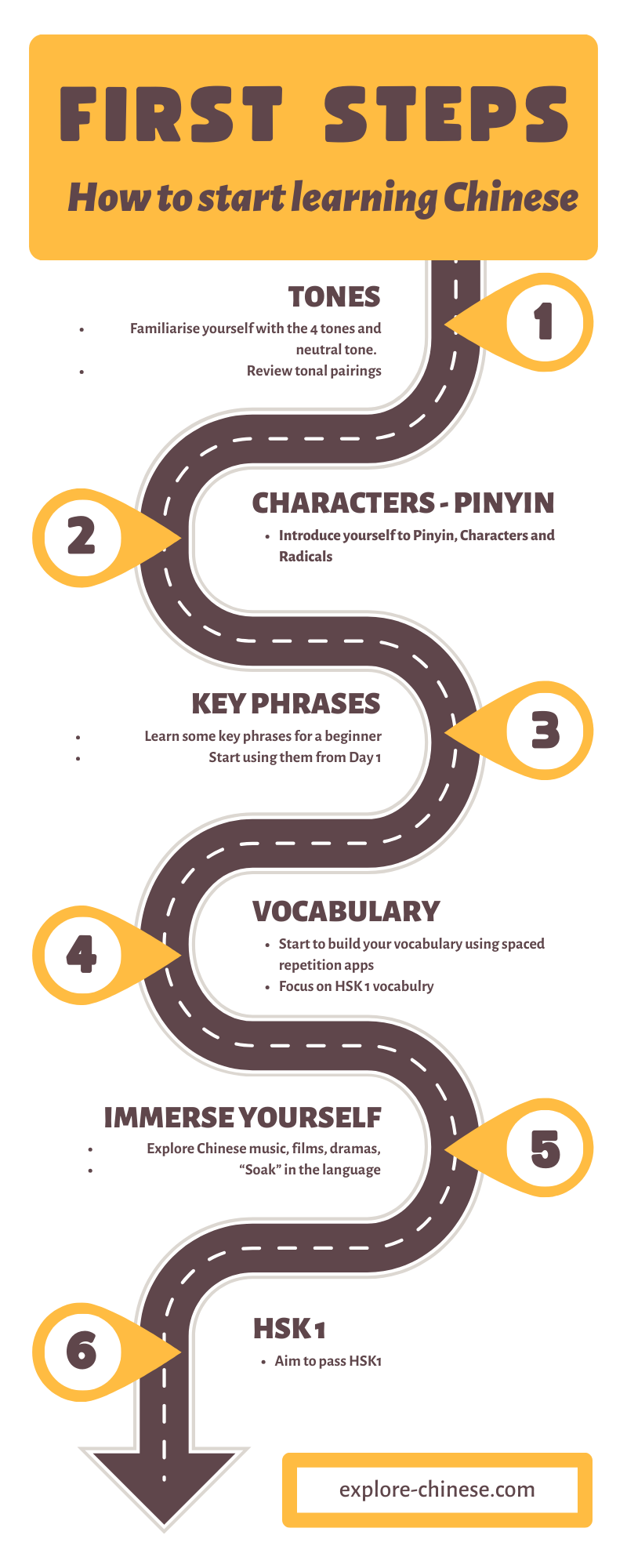How to learn Chinese characters as a beginner
Learning Chinese characters can seem daunting for beginners, but with the right approach, it becomes an achievable and rewarding journey. Unlike alphabetic systems, Chinese relies on logograms, each representing a word or concept. Start by mastering basic strokes and radicals—the building blocks of characters. Focus on high-frequency characters first, as they form the foundation for more complex ones. Techniques like spaced repetition, mnemonics, and consistent writing practice can significantly enhance retention. Pairing characters with pinyin and real-life context also aids comprehension. With patience and persistence, even beginners can gradually build confidence and proficiency in reading and writing Chinese characters.
How to Learn Chinese Characters as a Beginner
Learning Chinese characters can seem daunting at first, but with the right approach, it becomes manageable and even enjoyable. Start by understanding the basic structure of characters, including radicals and strokes, as they form the foundation. Practice writing regularly, use mnemonics to aid memory, and leverage spaced repetition tools like flashcards or apps. Consistency and exposure through reading simple texts will also help reinforce your learning.
1. Understanding the Basics of Chinese Characters
Chinese characters are logograms, meaning each represents a word or concept. They consist of radicals (components that hint at meaning or pronunciation) and strokes (the individual lines used to write them). Beginners should start by learning common radicals and stroke order rules, as these make memorization easier.
See AlsoHSK 3 Vocabulary Test (300 Words)| Element | Purpose |
|---|---|
| Radicals | Provide clues about meaning or pronunciation |
| Strokes | Basic lines that form characters |
| Stroke Order | Rules for writing characters correctly |
2. Effective Memorization Techniques
Using mnemonics (memory aids) can make learning characters more engaging. For example, associating a character’s shape with a familiar object or story helps retention. Spaced repetition systems (SRS) like Anki or Pleco reinforce learning by reviewing characters at optimal intervals.
| Technique | Benefit |
|---|---|
| Mnemonics | Creates memorable associations |
| SRS Apps | Improves long-term retention |
| Visualization | Links characters to mental images |
3. Practicing Writing Characters
Writing characters by hand reinforces memory and helps internalize stroke order. Use grid paper to maintain proportions and practice regularly. Start with simple characters before progressing to more complex ones.
| Practice Method | Advantage |
|---|---|
| Grid Paper | Ensures correct proportions |
| Repetition | Builds muscle memory |
| Stroke Order | Essential for readability |
4. Using Technology to Aid Learning
Apps like Pleco, Skritter, and HelloChinese offer interactive ways to learn characters. They include features like stroke animations, quizzes, and pronunciation guides. Online dictionaries and flashcard decks can also supplement your studies.
See AlsoHow to Learn Chinese Characters: Six Effective Techniques| Tool | Feature |
|---|---|
| Pleco | Comprehensive dictionary & flashcards |
| Skritter | Stroke-order practice |
| HelloChinese | Gamified learning |
5. Building Vocabulary Through Reading
Start with children’s books or graded readers designed for learners. Highlight frequent characters and review them in context. Over time, progress to news articles or short stories to expand your vocabulary.
| Material | Benefit |
|---|---|
| Graded Readers | Tailored for beginners |
| Children’s Books | Simple language & visuals |
| News Articles | Exposes practical vocabulary |
How to write 1, 2, 3, 4, 5, 6, 7, 8, 9, 10 in Chinese?

How to Write Numbers 1-10 in Chinese Characters
In Chinese, numbers from 1 to 10 are written using specific characters. Below is the list with their characters and Pinyin (pronunciation):
See AlsoHSK 5 Vocabulary Test (450+ Words)- 1: 一 (yī)
- 2: 二 (èr)
- 3: 三 (sān)
- 4: 四 (sì)
- 5: 五 (wǔ)
- 6: 六 (liù)
- 7: 七 (qī)
- 8: 八 (bā)
- 9: 九 (jiǔ)
- 10: 十 (shí)
Pronunciation Guide for Chinese Numbers 1-10
Correct pronunciation is essential when learning Chinese numbers. Here’s a breakdown:
- 一 (yī): Pronounced like ee with a high flat tone.
- 二 (èr): Sounds like are with a falling tone.
- 三 (sān): Similar to sahn with a high flat tone.
- 四 (sì): Pronounced like suh with a sharp falling tone.
- 五 (wǔ): Sounds like woo with a falling-rising tone.
Stroke Order for Writing Chinese Numbers
Writing Chinese characters requires following the correct stroke order. Key rules:
- 一 (yī): A single horizontal stroke from left to right.
- 二 (èr): Top stroke first, then the longer bottom stroke.
- 三 (sān): Three horizontal strokes, top to bottom.
- 四 (sì): Starts with the outer frame, then inner strokes.
- 五 (wǔ): Begins with the top horizontal, followed by other strokes.
Common Mistakes When Learning Chinese Numbers
Avoid these common errors when writing or pronouncing numbers:
See AlsoThe 10 best free Chinese reading resources for beginner, intermediate and advanced learners- Confusing 四 (sì) with 十 (shí) due to similar shapes.
- Mispronouncing 七 (qī) as chee instead of a soft chi.
- Writing 八 (bā) with strokes that don’t slant outward.
- Forgetting the rising tone in 九 (jiǔ).
- Incorrect stroke order for 六 (liù), which starts with a dot.
Usage of Numbers 1-10 in Daily Chinese
Numbers are used frequently in daily conversations. Examples include:
- Counting: 一, 二, 三... (yī, èr, sān...).
- Phone numbers: 五五五 (wǔ wǔ wǔ) for 555.
- Prices: 十元 (shí yuán) means 10 yuan.
- Age: 我六岁 (wǒ liù suì) translates to I am six years old.
- Dates: 三月 (sān yuè) is March (third month).
Are Chinese characters easy to learn?

The Complexity of Chinese Characters
Chinese characters, or Hanzi, are known for their complexity due to their unique structure and strokes. Unlike alphabetic systems, each character represents a meaning and sometimes a sound, making them more challenging to master. Here are key factors:
- Stroke order: Characters must be written in a specific sequence, which can be difficult to memorize.
- Radicals: Many characters are built from smaller components called radicals, adding layers of complexity.
- Homophones: Different characters may share the same pronunciation but have entirely different meanings.
Time Investment Required
Learning Chinese characters demands a significant time commitment. Unlike languages with phonetic scripts, mastering Hanzi requires repeated practice and exposure. Consider the following:
- Repetition: Writing characters repeatedly is essential for muscle memory.
- Frequency: Around 3,000 characters are needed for basic literacy, which takes years to learn.
- Consistency: Daily practice is crucial to retain knowledge and avoid forgetting.
Visual and Mnemonic Techniques
To ease the learning process, many use visual associations or mnemonics to remember characters. These methods can make Hanzi more approachable:
- Pictographs: Some characters resemble the objects they represent (e.g., 山 for mountain).
- Storytelling: Creating stories around characters helps reinforce their meaning and structure.
- Flashcards: Tools like Anki or physical flashcards aid in spaced repetition learning.
Comparing Chinese Characters to Other Writing Systems
Chinese characters differ significantly from alphabetic or syllabic writing systems. Here’s how they compare:
- No phonetic clues: Unlike Spanish or French, characters don’t always indicate pronunciation.
- Logographic nature: Each character is a standalone unit of meaning, unlike letters forming words.
- Cultural context: Understanding characters often requires knowledge of Chinese history and culture.
Resources and Strategies for Learning
Effective learning relies on using the right resources and strategies. Here are some proven methods:
- Textbooks: Structured courses like Integrated Chinese provide a systematic approach.
- Apps: Platforms like Pleco or Skritter offer interactive character practice.
- Immersion: Reading signs, watching shows, or engaging with native speakers accelerates learning.
Which Chinese characters should I learn first?

Basic Chinese Characters for Beginners
When starting to learn Chinese, focus on high-frequency characters that form the foundation of the language. These include simple, commonly used characters that appear in daily conversations and texts. Here are some essential ones:
- 一 (yī) – Meaning one, this is the simplest character and a building block for numbers.
- 人 (rén) – Means person and appears in many compound words.
- 日 (rì) – Translates to sun or day, a key character for time-related vocabulary.
Chinese Characters for Everyday Communication
To quickly engage in basic conversations, prioritize characters related to daily interactions and practical situations. These will help you navigate common scenarios:
- 你 (nǐ) – Means you, essential for addressing others.
- 好 (hǎo) – Translates to good or okay, frequently used in greetings.
- 谢谢 (xièxie) – Means thank you, a polite must-know phrase.
Chinese Characters for Numbers and Time
Understanding numbers and time-related characters is crucial for scheduling, shopping, and basic transactions. Start with these:
- 十 (shí) – Means ten, the base for counting.
- 年 (nián) – Translates to year, used in dates.
- 现在 (xiànzài) – Means now, helpful for time references.
Chinese Characters for Directions and Locations
If you plan to travel or navigate Chinese-speaking areas, learn these directional and location-based characters:
- 上 (shàng) – Means up or above, used in addresses.
- 左 (zuǒ) – Translates to left, important for directions.
- 北京 (Běijīng) – The name Beijing, a common place reference.
Chinese Characters for Food and Dining
For dining out or grocery shopping, focus on food-related characters to recognize menus and labels:
- 水 (shuǐ) – Means water, a basic necessity.
- 米饭 (mǐfàn) – Translates to rice, a staple food.
- 牛肉 (niúròu) – Means beef, common in dishes.
How do I start learning Chinese for beginners?

1. Understand the Basics of Mandarin Chinese
To begin learning Mandarin Chinese, familiarize yourself with its fundamental components. Unlike alphabetic languages, Chinese relies on characters, tones, and a unique grammatical structure. Start by learning Pinyin, the romanization system for pronunciation. Here’s how:
- Study Pinyin: Master the sounds and tones using online resources or apps like Pinyin Trainer.
- Learn Tones: Mandarin has four tones—practice with audio tools to distinguish them.
- Basic Characters: Begin with simple characters like 人 (person) or 日 (sun) to build recognition.
2. Build a Strong Vocabulary Foundation
Expanding your vocabulary early is crucial. Focus on high-frequency words and phrases used in daily conversations. Use these strategies:
- Flashcards: Apps like Anki or Pleco help memorize characters and meanings.
- Theme-Based Learning: Group words by topics (e.g., greetings, food) for better retention.
- Labeling: Label objects in your environment with their Chinese names.
3. Practice Listening and Speaking Skills
Listening and speaking are essential for fluency. Immerse yourself in the language through these methods:
- Podcasts/Audiobooks: Listen to beginner-friendly content like ChineseClass101.
- Language Exchange: Partner with native speakers via platforms like Tandem or HelloTalk.
- Repeat Aloud: Mimic dialogues from videos or apps to improve pronunciation.
4. Master Chinese Characters Step by Step
Learning Chinese characters can be daunting, but breaking them down simplifies the process. Follow these steps:
- Radicals First: Learn common radicals (character components) to decode complex characters.
- Stroke Order: Practice writing characters correctly using grids and guides.
- Spaced Repetition: Review characters regularly to reinforce memory.
5. Use Structured Learning Resources
Leverage structured courses and tools to maintain progress. Recommended resources include:
- Textbooks: Books like Integrated Chinese provide a clear learning path.
- Online Courses: Platforms like Coursera or edX offer beginner courses.
- Mobile Apps: Use Duolingo, HelloChinese, or Memrise for interactive practice.
Frequently Asked Questions (FAQ)
What is the best way to start learning Chinese characters as a beginner?
For beginners, the most effective approach is to start with basic characters that are simple and frequently used, such as 人 (rén, person), 口 (kǒu, mouth), or 日 (rì, sun/day). These characters often serve as building blocks for more complex ones. Repetition and writing practice are crucial—try copying each character multiple times while saying its pronunciation aloud. Additionally, using flashcards or apps like Anki can help reinforce memory through spaced repetition.
How many Chinese characters should I learn each day?
As a beginner, aim to learn 5–10 characters per day to avoid feeling overwhelmed. Focus on quality over quantity—ensure you understand the meaning, pronunciation, and stroke order of each character. Over time, you can gradually increase the number as your familiarity grows. Consistency is key, so daily practice is more important than cramming large amounts at once.
Are there any tools or resources to help memorize Chinese characters?
Yes, several tools and resources can make learning Chinese characters easier. Mobile apps like Pleco, Skritter, and HelloChinese offer interactive ways to practice. Textbooks such as Remembering the Hanzi provide structured methods for memorization. Online platforms like YouTube and Coursera also offer video lessons and courses. Additionally, mnemonics—creating stories or associations for characters—can significantly improve retention.
How important is stroke order when learning Chinese characters?
Stroke order is extremely important because it ensures legibility and speed when writing. Following the correct sequence also helps with memorization, as it reinforces the structure of the character. Many learners overlook this aspect, but mastering stroke order rules early on will make learning more complex characters easier later. Resources like stroke order diagrams or apps with writing practice features can guide you in developing this skill.
Leave a Reply

Related Posts